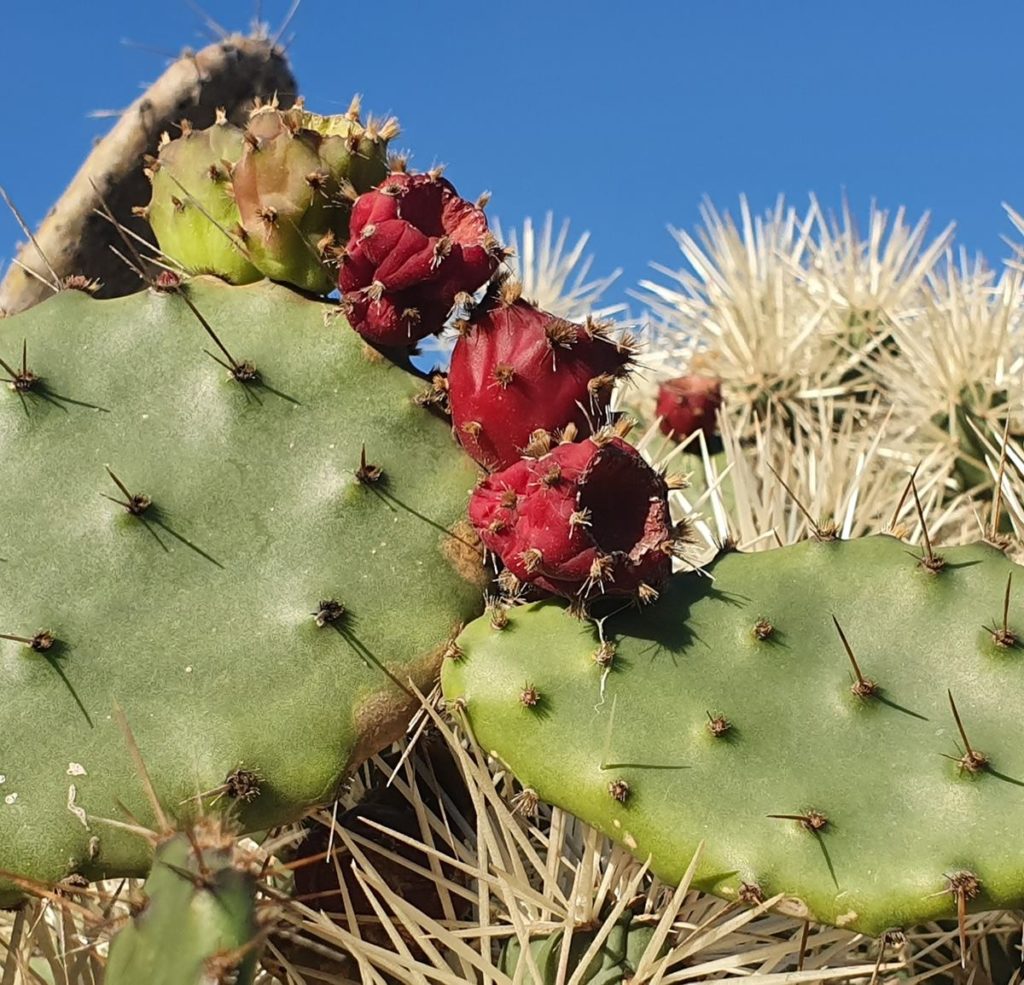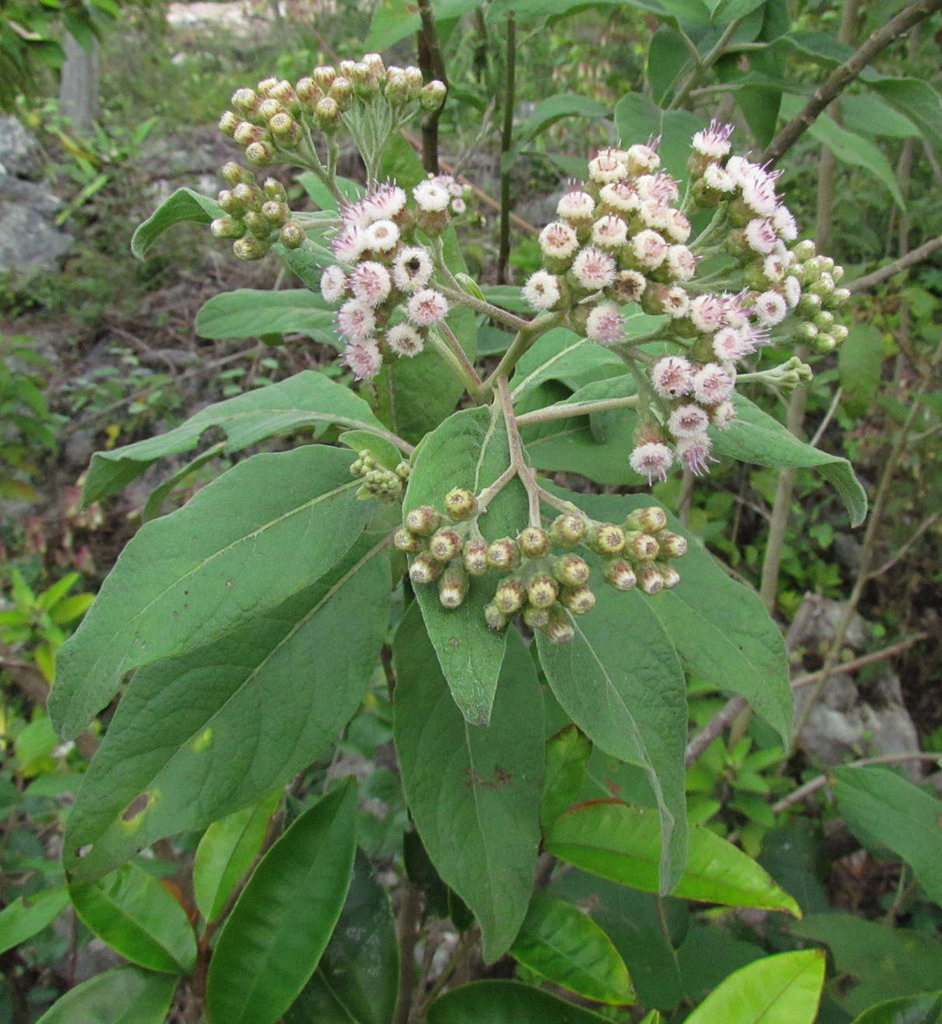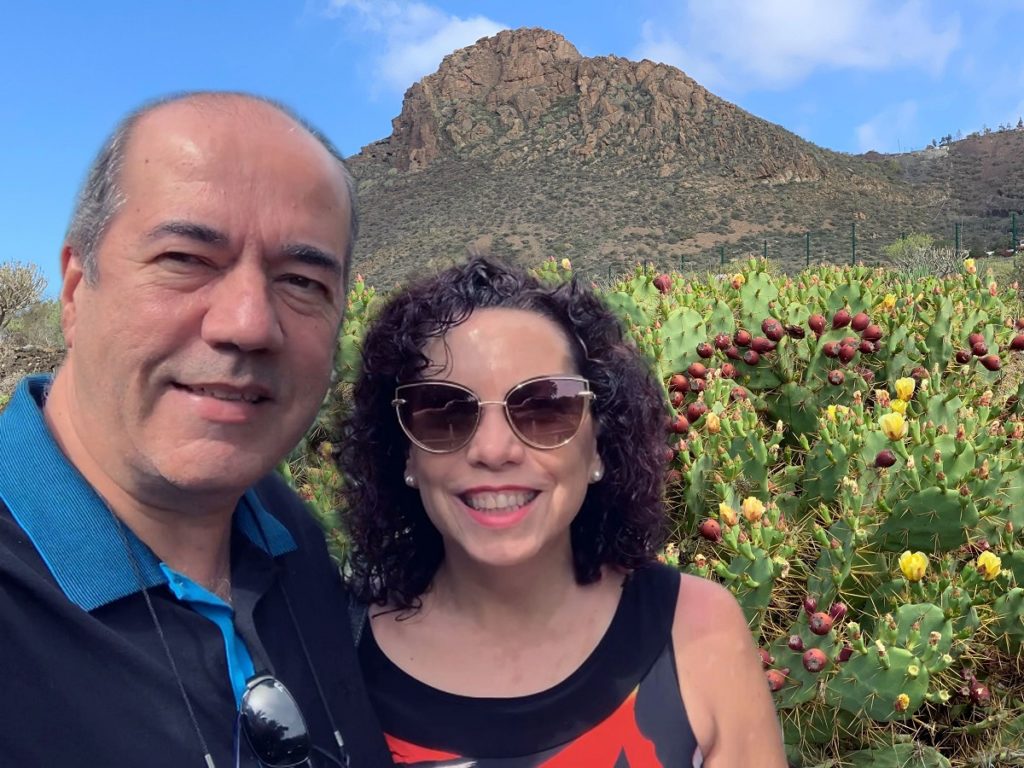
An army made up of a hundred men and women, not counting those who join each year through Social Employment, fight in Tenerife against the invasive plants that have been gaining ground on our Island for years, where almost 50% of it is protected soil.
Not even the tuneras, be they red or spike figs (Opuntia ficus), who have been among us for centuries, are saved from the battle that started from Tenerife Council with special emphasis since 2017, with the repeated island and municipal campaigns against the widespread cat’s tail (Pennisetum setaceum).
The numbers sing and highlight the need to act, as he explains Jose Alberto Delgado Bello, Head of the Biodiversity Unit of the Tenerife Council: Tenerife has gone from having a registered 9,160,437 square meters (900 hectares) with invasive species before 2020 to 23,161,052 (2,300 hectares) in 2021 and in 2017, of the 1,629 species Cataloged as exotic in the Canary Islands, there are 1,252 on the island of Tenerife. “This reflects the investigation and control work that we carry out from the Cabildo, something that is not done in other islands,” said Delgado Bello.
The report of the 100 most harmful invasive alien species in the world, published by the International Union for Conservation of Nature (IUCN), includes 21 species that are present in the Canary Islands. Of these, 11 are animal species and 10 are plants. 18 are present in Tenerife, seven in the case of flora. 43% of the species introduced were recorded from the sixties and the trend continues to be progressive despite the growing awareness of the administrations about biodiversity in recent years, specifically the Cabildo de Tenerife.
“These invasive alien species should have been withdrawn many years ago and now that we have the means we try to restore the ecosystem, such as the prickly pear cactus, declared as invasive alien plants by the Spanish State since 2013 and that is why we are obliged to conserve wildlife does not maintain plants that come from other continents, as is the case with the opuntia, which comes from Mexico. What the legislation allows is that these species are confined to crops, that you can have these tuneras on a farm, but not in protected natural areas, which is where we intervene ”.
For José Alberto Delgado, the proliferation of tuneras on the island is due to the fact that “when the crops were abandoned, this species escaped human control,” and he understands the surprise of some when they remember that those tuneras two hundred years ago took away hunger from many Tenerife residents and some even point out that it was the basis of the diet of the slaves brought to Adeje after the conquest, due to its great nutritional value. “Without a doubt, they eliminated hunger and my parents ate a lot of figs, because I also come from the rural world, like 80% of the island’s population, but we cannot allow it to spread through our natural landscapes. Furthermore, the commercialization of these species is totally prohibited ”.

There is also concern about the uncontrolled development of the so-called Pluchea ovalis, “an aromatic plant that foreigners introduced near the golf courses and that now spreads throughout much of the south and west of Tenerife, something that is scaring us because its germination capacity is much greater than the Pennisitum (cat theft) and it is a plant that is not yet classified in the regulations ”.
The biologist recalls that “since 2017 we have teams of 70 to 100 people annually to recover the threatened ecosystem throughout the Island, at least in the natural space, something else is the species introduced in urban areas.”
In Tenerife there are about 200 species declared a priority for eradication, according to a decree of the European Union of 2019, but Delgado calculates that “there may be 12,000 exotics on the island and of those about 200 are invasive, which is declared to the species when They are an agent of change in the conservation of the natural environment and from the Cabildo we only execute what the regulations that botanists of the State or the Government of the Canary Islands send us. Of those 200 species, we are not attacking all of them, and that can be criticized, because we only serve 40 or 50 species to which we give priority by scientific-technical consensus ”.
Another of the missions of the Biodiversity unit of the Cabildo is the recovery of the thermophilic area, when only 7% of the old thermophilic forest remains in Tenerife, giving an example that “of the 115,000 palm trees (Phoenix canariensis) there are only 1,000 in protected areas on the island and 500 of them are private, so we would only have the possibility of protecting 500 of them ”.
Regulations and catalog
At the state level, Law 42/2007 of December 13, on Natural Heritage and Biodiversity, defines an invasive exotic species as “one that is introduced or established in an ecosystem or natural or semi-natural habitat and that is an agent of change and threat to native biological diversity, either due to its invasive behavior, or due to the risk of genetic contamination ”, creating for this the Spanish catalog of invasive alien species, after the approval of Royal Decree 630/2013 of August 2, which regulates the protection of the natural environment and biodiversity of Spain.

The pioneer farm in Valle San Lorenzo
Surprised and even concerned José Ledesma was left with the campaign to eradicate the tuneras in Tenerife carried out by the Cabildo and the refusal to commercialize them. Ledesma and his wife Inma Bello have a pioneer company in the Canary Islands on a farm in Valle San Lorenzo with the commercialization of jam, mint infusions, organic sea salt, pulp for smoothies, juices and pastries and even fermented fig wine vinegar, extracted of red figs, so much so that in November it was considered the Best Spanish Product at the Iberian Fair in London.
“It would be the last straw if they would remove the possibility of marketing a product that is beneficial for health and that so much hunger has taken away many canaries in centuries,” said José Ledesma, to clarify: “I suppose that when they speak that it cannot be marketed, they mean to the plants themselves, not to their fruits and products ”.
















